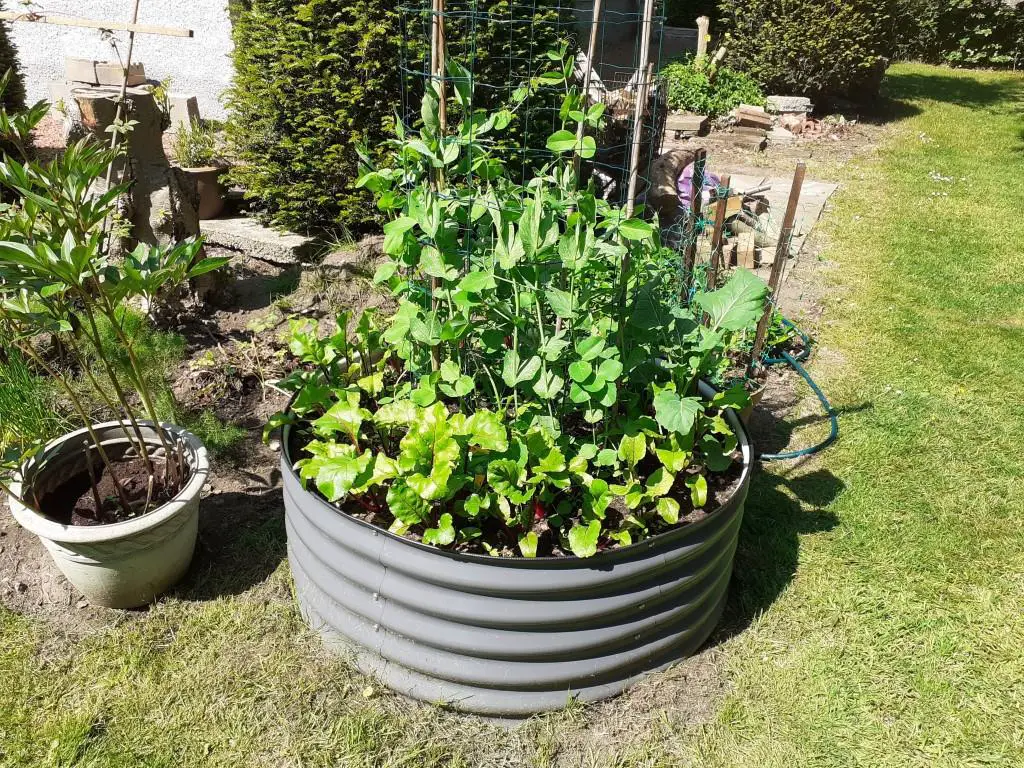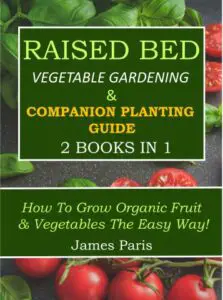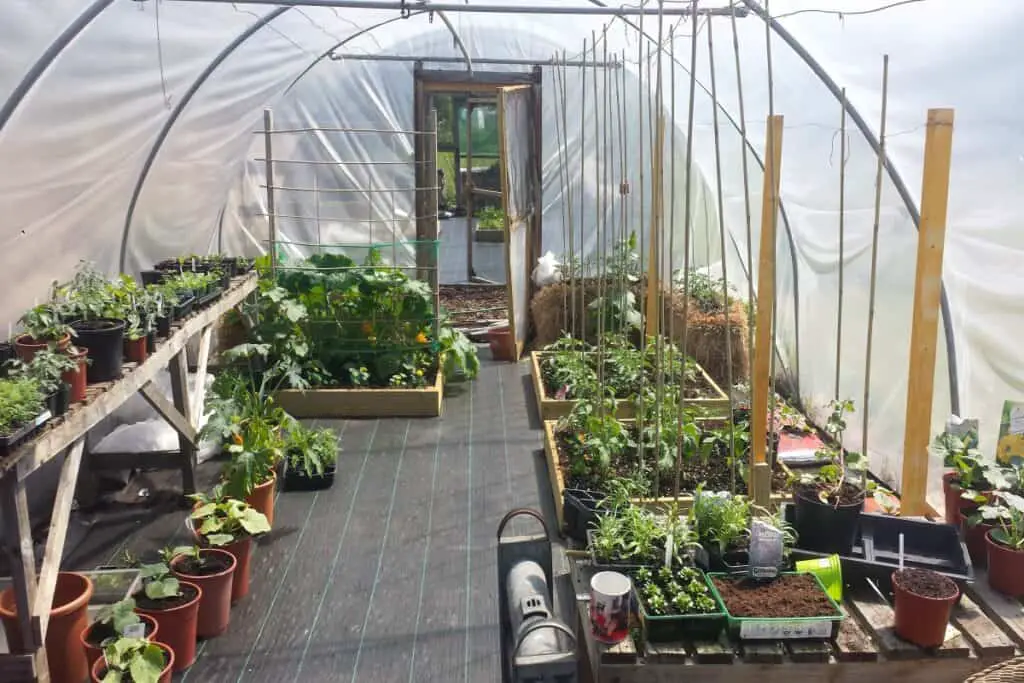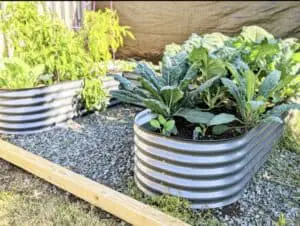Whilst there are many vegetable gardening sites that recommend 12 inches plus (250mm) for growing vegetables in raised garden beds, the fact is that I have personally grown many vegetables in raised beds as little as 4 inches (100mm) deep.
How have I managed to successfully grow veggies in such shallow soil? There are a few reasons which I will explain fuller in this article – It’s not ‘rocket science’ as they say.
The quick answer is to say anything from 4 – 24 inches deep. It all depends on the type of vegetables you wish to grow. So a MINIMUM of 4 inches (100mm) is required to grow lettuce for example, where 24 inches is needed for seep tap-root vegetables.
Things to consider regarding depth of bed:
- The type of vegetable you wish to grow. It stands to reason that deep-rooted tap vegetables will need that extra depth to grow well, otherwise their growth will be stunted and distorted.
- Is the raised bed sitting on a solid base (concrete or slabs), poor or no soil, or is it situated on top of good garden ground.
- Deep beds can be very costly to fill – check this article for tips on filling deep beds cheaply – Do you have the budget for deep beds?
Now to explore these points in a bit more detail…
Point number 1: Choosing vegetable plants
First off all I would always recommend you grow vegetables that you personally like to eat! It may seem obvious, but the fact is that we sometimes get ‘carried away’ and just grow whatever comes to mind!
This is good if you like a challenge or indeed are able to trade them with the neighbour for veggies you do like. But if not, then you will just be growing a lot of vegetables that will end up in the compost heap!
I mentioned earlier that deep tap-root vegetables need the proper depth in order to grow to their full potential. This is particularly the case with many parsnip varieties such as the Hollow Crown for example, which may require a depth of 18 inches or even more.
Most carrot varieties will require at least 12 inches, unless you choose a short variety such as the ‘Chantenay’ which only grows to about 6 inches in length.
So we can see that these vegetables need a good depth of soil in which to grow – but there are MANY other vegetable plants that will grow in very shallow soil.
Shallow rooted vegetables:
4 Inches – Vegetables that will grow in as little as 4 inches of soil include… Lettuce, radish, onions, beets, garlic, mustard, chives, Chinese cabbage, mustard greens, peas, beans, shallots. Peppers, tomatoes
6 Inches of soil would include all the preceding vegetables plus cabbage, broccoli, cauliflower, zucchini, melon, cucumber, squash.
10 inches of soil would accommodate all but the deep tap-root veggies as described above. This includes potatoes which can in fact be grown in shallower soil, but production is limited purely because the tubers have little place to develop.
Some Considerations for soil depth.
Apart from the vegetables you wish to grow, another important thing to consider is the infill material you have for the raised bed.
To be clear – a raised bed should not be filled with topsoil only. This has a tendency to compact in the confines of a raised bed. This means restricted root growth, and a more difficult area to maintain or weed.
Strictly speaking, it should be filled with a mix of compost, topsoil, and vermiculite to create a loose, friable material, nutrient rich, ideal for growing vegetables. Check out our article here, for more info on infill materials for raised beds.
Point 2 – Raised bed situation:
This is another important factor when it comes to determining the depth of the garden bed.
For example. If you are placing the frame upon an already cultivated site, then the depth of the structure is only important with regard to the operating height.
You have all the depth of growing soil you need under the bed as well as what you see on the surface. The only reason to consider the height or ‘depth’ is if you want the bed higher to make it easier to work on, or indeed if the underlying soil is no good and you want the full depth of good infill to grow your veg.
Using metal raised beds in the uk? Check out this post…
If the bed is to be placed on top of solid concrete or other hard surface, then you should consider the minimum depths for the vegetables you wish to grow as discussed earlier, and build your structure accordingly.
Point 3 – Filling a deep raised bed.
This is a good point to consider before you rush away to build a huge, deep, raised garden bed – it could cost you a small fortune!
You have to consider firstly the overall cost of the structure, whether it be made from metal or timber – both have their advantages with regard to cost and effectiveness.
Secondly you have to take into account the cost of the infill itself, which is of course more expensive in a deep structure as opposed for something only 4 inches deep.
However…If for example you only need 6 inches of soil depth for your choice of vegetables u want to build a high bed for easy of operation, or to save your back! Then there is nothing to stop you building a high bed and filling the bottom half with cheap materials (including bricks and rocks) before adding your 6 inches of soil.
As you can see, there are a few things to consider with regard to the ideal depth for a raised garden bed. I hope this short article helps you come to an appropriate decision for your needs.
Happy planting!
‘VEGEGA’ METAL GARDEN BEDS HERE
UK Vegega Site Here
DISCLOSURE: I may recieve a small commission should you decide to purchase any item via the links on this site. This does not affect the cost to you or change your statutory rights.




